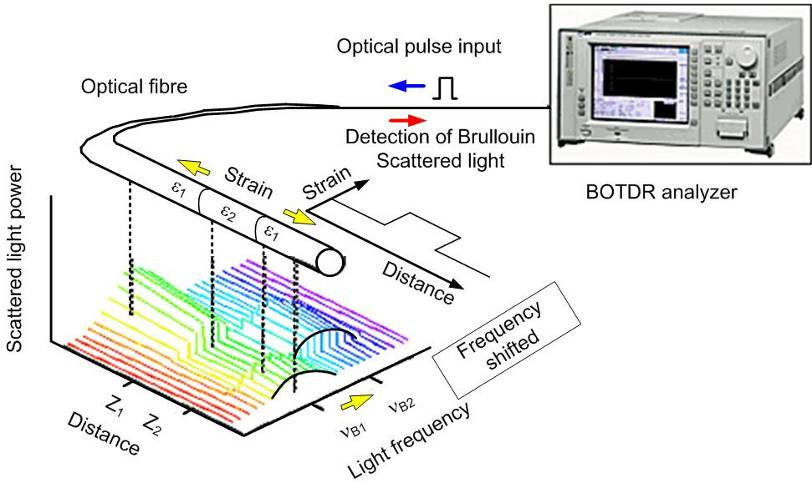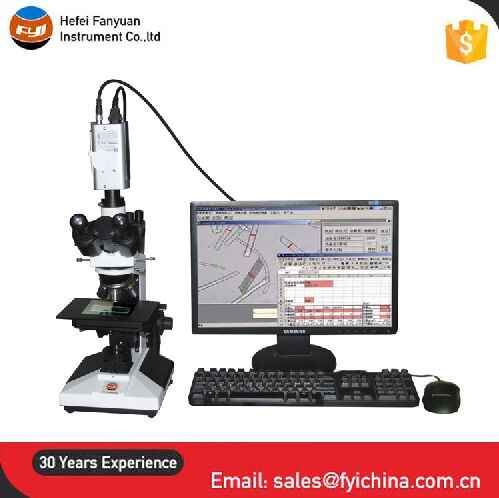Optimize Your Fiber Optic Efficiency: Understanding Optical Fibre Diameter Analyser Innovation
The performance of fiber optic systems is critically influenced by the precision of their size, a variable frequently overlooked in the quest of ideal signal stability. Recognizing the modern technology behind optical fibre size analysers reveals the detailed balance between measurement precision and manufacturing high quality. These gadgets not only enhance compliance with industry standards but additionally supply real-time insights that can preemptively resolve possible issues. The effects of their usage extend beyond mere dimension; they can essentially modify the landscape of fibre optic performance. What elements should one consider to harness their complete potential?
Importance of Optical Fiber Size
The size of optical fibre plays a critical function in figuring out the performance and performance of communication systems. It affects several vital criteria, consisting of the setting of light propagation, attenuation, and data transfer ability. Larger sizes commonly allow for numerous light modes, promoting greater data transmission prices. Conversely, smaller sizes have a tendency to sustain less settings, which can boost signal clearness and decrease crosstalk.

In addition, comprehending the diameter's implications can result in cost savings by reducing the requirement for signal amplification and repeaters in substantial networks (optical fibre diameter analyser). To conclude, the relevance of optical fiber size can not be overstated, as it straight impacts the general effectiveness and integrity of modern interaction systems

Just How Size Affects Signal Quality
Signal high quality in optical fibre systems hinges substantially on the diameter of the fibre. The size influences several key criteria, including depletion, data transfer, and modal dispersion. A smaller sized diameter can bring about higher attenuation prices, causing signal loss as light trips via the fiber. This depletion can endanger the stability of the transmitted information, leading to a decline in signal quality, particularly over fars away.
Conversely, larger sizes generally enable improved light capture and decreased modal diffusion, enhancing signal quality. In multimode fibres, a larger core diameter can sustain multiple light settings, yet it might also present intermodal dispersion, which can break down signal quality. Therefore, choosing the optimal fibre size is essential for accomplishing the wanted efficiency in particular applications.
Additionally, the interaction in between the fibre size and the wavelength of the light utilized plays a vital role in establishing the efficient transmission distance and general signal integrity. Thus, recognizing exactly how fibre diameter impacts signal quality is crucial for network designers and designers striving to maximize optical fibre systems for trustworthy, high-speed data transmission.
Overview of Diameter Analyser Innovation
In many optical fibre manufacturing processes, exact measurement of fiber diameter is crucial for making sure regular performance and top quality (optical fibre diameter analyser). Diameter analysers are innovative instruments developed to examine the physical measurements of optical fibres with high precision. They utilize sophisticated optical and laser modern technologies to measure the diameter, ovality, and concentricity of the fibre, hence giving vital information for top quality control
These analysers can operate in-line during the production procedure or as part of off-line testing procedures. In-line systems allow real-time surveillance, allowing suppliers to adjust parameters quickly, thus keeping optimal production problems. Off-line analysers, on the various other hand, provide detailed examinations of sets, ensuring that any type of inconsistencies from specified resistances are identified and resolved.
Size analysers significantly contribute to the reduction of issues in optical fibers, boosting total item dependability. By consistently gauging vital specifications, these innovations promote compliance with market requirements and specifications. As the demand for high-performance optical fibers remains to increase, the role of size analysers ends up being progressively important in achieving the wanted top quality and performance standards in fiber optic systems.
Secret Functions of Fibre Size Analysers
Although numerous designs of fiber size analysers exist, they typically share several vital functions that enhance their capability and dependability. One of one of the most considerable features is high-resolution dimension abilities, which ensure exact diameter analyses, essential for preserving quality assurance in fiber production. Furthermore, many analysers include innovative optical sensing units developed to detect minute variants in fiber diameter, hence offering important information for process optimization.
One more important function is real-time monitoring, enabling drivers to receive prompt feedback on fibre size throughout the manufacturing process (optical fibre diameter analyser). This capacity helps with quick adjustments and minimizes the likelihood of problems. Several analysers also come furnished with user-friendly interfaces, making it possible for drivers to easily browse via settings and information results
In addition, durable data storage and analysis capabilities are essential for tracking historic efficiency patterns and guaranteeing conformity with market requirements. These features collectively contribute to the efficiency of fiber size analysers in enhancing fibre optic efficiency.
Ideal Practices for Fiber Optimization

First, regular calibration of optical fiber size analysers is vital. This guarantees exact dimensions and lessens prospective inconsistencies that might affect performance. Next, maintaining a tidy working atmosphere is essential; dust and contaminants can bring about indicate destruction.
Furthermore, it is essential to pick fibres that satisfy details application demands. This involves examining factors such as depletion, bandwidth, and ecological conditions. Correct installation methods should likewise be stuck to, including staying clear of sharp bends and excessive tension, which can endanger fibre site stability.
In addition, employing sophisticated surveillance systems can help with real-time efficiency assessments, allowing prompt recognition of concerns. Normal testing and maintenance need to be conducted to guarantee that fibers continue to be within optimal operational specifications.
Last but not least, training personnel on the current fiber optimization modern technologies and approaches will improve their capacity to implement effective methods. By complying with these finest techniques, companies can considerably enhance the performance and life expectancy of their optical fiber systems, making certain reliable interaction and information transfer.
Conclusion
Finally, the integration of optical fibre diameter analyser technology is important official site for making the most of fibre optic performance. By making sure exact dimensions of fibre dimensions, these analysers substantially improve signal high quality and decrease losses during data transmission. Regular calibration and maintenance of the analysers are vital to maintain ideal efficiency and compliance with market requirements. Eventually, the application of this technology facilitates boosted information transmission prices and enhances signal stability, adding to the total efficiency of fibre optic systems.
Signal quality in optical fiber systems hinges dramatically on the diameter of the fiber.In numerous optical fiber manufacturing procedures, precise dimension of fibre size is vital for ensuring regular performance and high quality. As the demand for useful source high-performance optical fibers proceeds to increase, the duty of diameter analysers comes to be progressively essential in accomplishing the desired high quality and efficiency requirements in fiber optic systems.
These functions jointly contribute to the effectiveness of fiber size analysers in optimizing fiber optic performance.
In verdict, the combination of optical fibre size analyser innovation is essential for maximizing fiber optic performance.